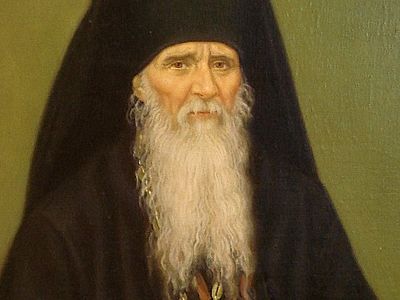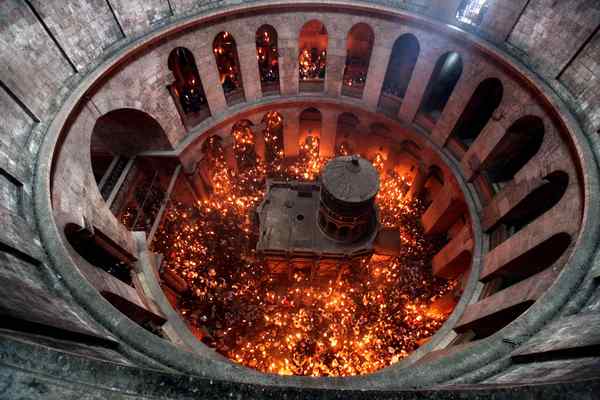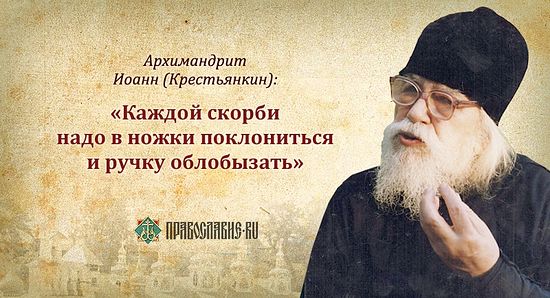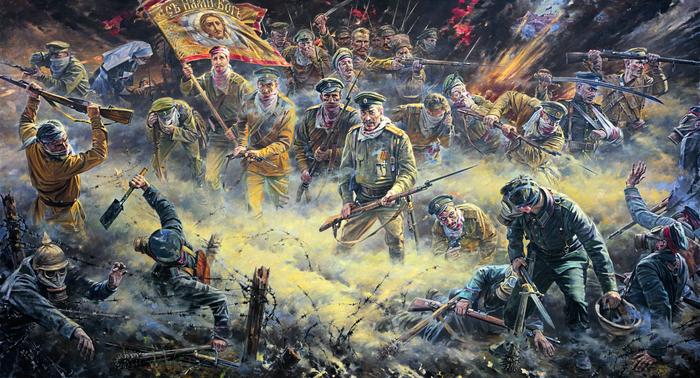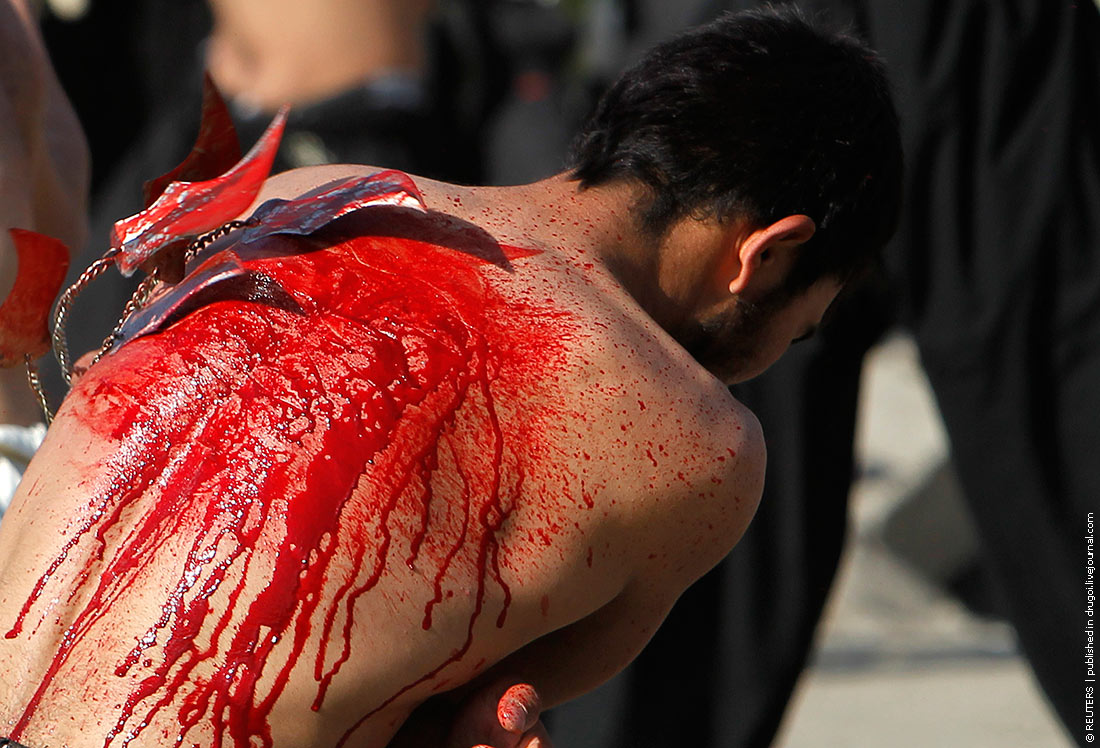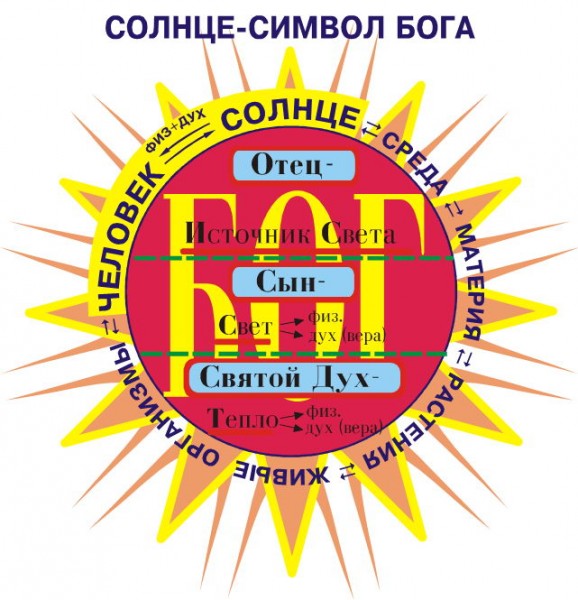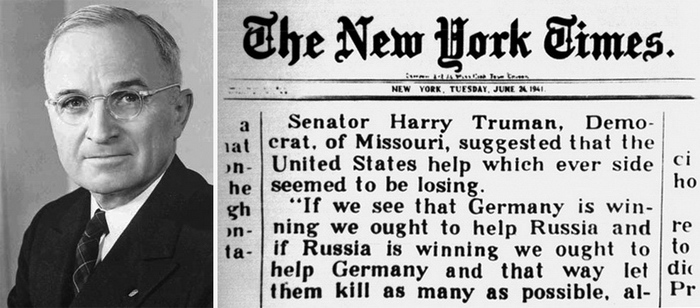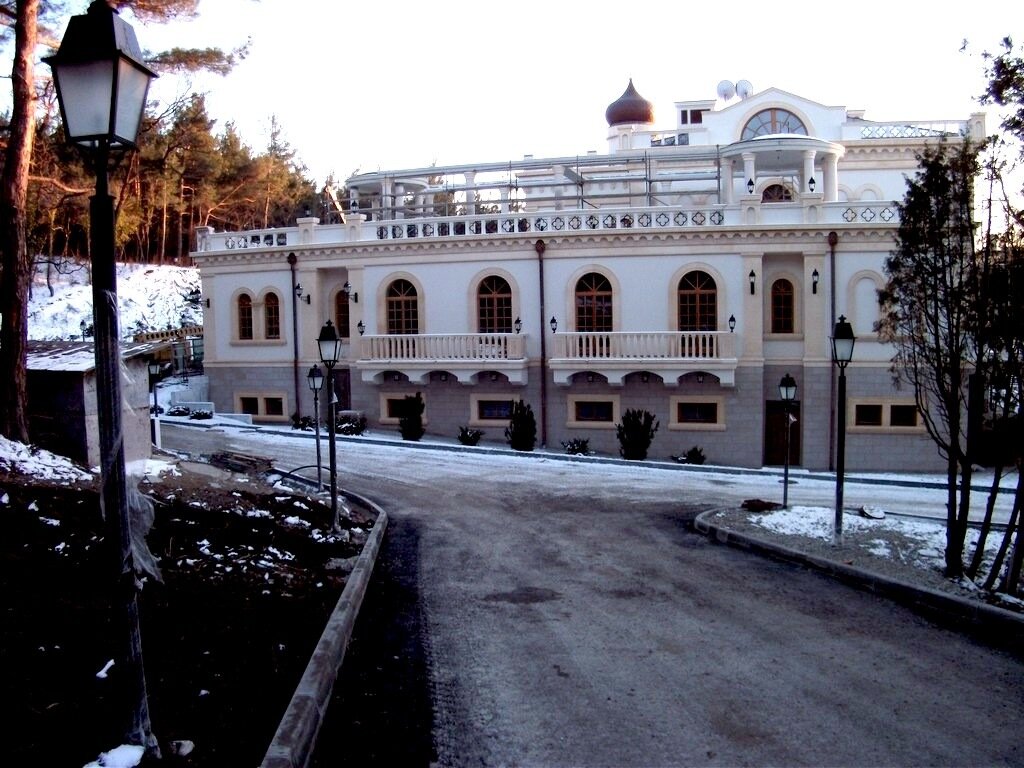What sea was opened before Moses. As ancient people walked on water
Our contemporaries, for the most part, do not believe in “miracles”, in enlightened sages, although few have heard that when Moses led the children of Israel out of Egypt, God made the waters of the Red Sea part [Chermnoe, Bible] and let the fugitives pass, but closed over the army of Pharaoh. However, those who truly believe in this miracle can now be counted on the fingers. Most take this and other miracles for fiction, superstition and "grandmother's tales." From this article, the reader learns about archaeological finds associated with this story.
Egypt is steeped in history, full of traces of ancient sciences, inventions and unique structures. The book of Exodus (Second Book of Moses) says that Moses brought the sons of Israel out of Egypt, they wandered the wilderness for 40 years, and during this time many miracles happened.
For starters, was Moses at all and did he live in Egypt?
When Moses was a baby, his adoptive mother [Batya, the daughter of Pharaoh] was called Hatchapsut, and Moses was given the name Senmouth. The serpent on his head on the statue indicates his belonging to the court. When Moses grew up, his Egyptian name was Tat Moses II. In Egypt, there are ancient statues that have a pronounced Jewish profile. It is believed that these are exactly the images of Moses.
 When Moses killed the Egyptian overseer, who mocked a Jew, he had to flee Egypt to avoid death. Pharaoh found out about this and sent his people to detain Moses, but Moses was able to take refuge in the land of Midian (Midian). Moses was married and had a son, whom he called Gersh, which means "unfamiliar in an unfamiliar land." This indicates that at that time Moses was on land not controlled by the Egyptians. It is known from scripture that Moses led a flock of sheep, the priest of Midian. Midian is not the area that we call the Sinai Peninsula today. It is located in Saudi Arabia, and it can be found on most maps in this place. Moses led this tribe on the other side of the desert and came to Mount Horeb, and the Angel of the Lord appeared to him in the Burning Bush. God commanded Moses to bring the people of Israel out of Egypt and bring him to this mountain. After the Ten executions of Egypt (in the form of water turned into blood, frogs, lice, wild animals, animal plague, sores on the skin, hail, locusts, darkness, killing of the firstborn) sent to Egypt, the pharaoh finally allowed Moses to bring him out people from egypt.
When Moses killed the Egyptian overseer, who mocked a Jew, he had to flee Egypt to avoid death. Pharaoh found out about this and sent his people to detain Moses, but Moses was able to take refuge in the land of Midian (Midian). Moses was married and had a son, whom he called Gersh, which means "unfamiliar in an unfamiliar land." This indicates that at that time Moses was on land not controlled by the Egyptians. It is known from scripture that Moses led a flock of sheep, the priest of Midian. Midian is not the area that we call the Sinai Peninsula today. It is located in Saudi Arabia, and it can be found on most maps in this place. Moses led this tribe on the other side of the desert and came to Mount Horeb, and the Angel of the Lord appeared to him in the Burning Bush. God commanded Moses to bring the people of Israel out of Egypt and bring him to this mountain. After the Ten executions of Egypt (in the form of water turned into blood, frogs, lice, wild animals, animal plague, sores on the skin, hail, locusts, darkness, killing of the firstborn) sent to Egypt, the pharaoh finally allowed Moses to bring him out people from egypt.
According to a study by archaeologist Ron Wyatt, Amenhotep III was Pharaoh at the time of the Exodus. Most archaeologists do not believe in the route of the Exodus. According to the Bible, Moses led the people of Israel to the Sinai Peninsula. But no archaeological evidence was found that these people lived there for 40 years. However, it is possible, 40 is not such a long time, especially since they wandered and did not build any structures.
At the beginning of the Exodus, the sons of Israel lived in the Nile Delta or on the land of Ramses and first pitched in the northern part of the Gulf of Suez or Sukkot. This was the beginning of a nomadic lifestyle. Then they wandered through the desert near the Red Sea, or what we today call the Sinai Peninsula, and went to the Gulf of Aqaba.

 It is traditionally believed that the children of Israel crossed the Red Sea in a place that does not correspond to Biblical legends. Could Bitter Lakes (Merru) be the place mentioned in the Bible? Could thousands of chariot soldiers drown in such shallow waters?
It is traditionally believed that the children of Israel crossed the Red Sea in a place that does not correspond to Biblical legends. Could Bitter Lakes (Merru) be the place mentioned in the Bible? Could thousands of chariot soldiers drown in such shallow waters?
During the passage through the desert near the Red Sea, fleeing from the army of the pharaoh, God ordered Moses to turn south, so they headed through a wadi or canyon called Wadi Vatir and went to the sea. The Bible says that they lost their way in the earth, and the desert locked them.

 The shore where the transition took place
The shore where the transition took place
Upon arrival at the coast, the sons of Israel felt a trap, unable to turn either back or north, because in the northern part of the coast there was a three-story, Egyptian military fortress, which, being in restoration, stands today. 
In addition, their flight was hindered by mountains. In the south, the mountains went down to the sea itself, as Josephus (an ancient historian) said: “For [on each side] there were mountains that entered the sea, and were impassable because of their roughness, and prevented their escape.” “Jewish Antiquities , book 2, 15-3 ". These mountains can be seen today. If you look at the coast map, it is quite large and can accommodate a couple of million people. That is, it remains only - Nuweiba, Egypt.
Granite Column of Solomon
The column corresponds to a similar column on the other side of the bay in Saudi Arabia. On the column are engraved timeless words in Hebrew: death, water, Pharaoh, Edom, the Lord (Yahweh) and Solomon. These columns are 3000 years old, on the one in Saudi Arabia, the words of the inscription were destroyed due to the ideological struggle between the two peoples.
These columns were erected by King Solomon 400 years after the miracle of the transition of the Red Sea. The seaport of Solomon was located in the northern part of Aqaba Bay in Eilat, the king knew the place where the Red Sea crossed. The Bible also mentions this column. The full name of this place on the map is Nuwayba "al Muzayyinah (Nuweiba al Muzayina), which means:" The waters of Moses parted. "
The scripture says that God made a strong east wind rise and the waters parted, and the sons of Israel were able to cross the Red Sea dry land to Arabia. The transition path is from a quarter to half a mile wide and gradually descends to the bottom of the Red Sea, and then rises to the coast in Saudi Arabia. The depths of the Red Sea are located on two sides of the transition point, these are the depressions of Eilat and Arag with depths of 3000 - 5000 feet, respectively.
Some chariot wheels were found by archaeologist Ron Wyatt, who used a molecular frequency generator - equipment designed to search for gold. The Bible says that all the chariots of Pharaoh and more than 600 gilded chariots were used to chase God's people. It is estimated that 20,000 chariots were destroyed that day. Four-spoke wheels were found in the Egyptian tomb of the time. Four, six and eight-spoke wheels found in the bay were used only at that time, that is, during the 18th dynasty or 1446 BC, when the Exodus took place. Numerous chariot wheels, as well as human and horse bones covered with corals, were found at the crossing point. The same wheels from the chariots were also found on the other side of the Red Sea (at the transition point). A dried horse hoof was also found, while today there are no horses on the Sinai Peninsula.
When the right hand of God smote all the firstborn of Egypt, a great cry arose in the whole earth. Pharaoh called Moses and Aaron at night and commanded him to leave his country. In the 104th psalm is sung: Egypt rejoiced over their descent; for fear from them fell upon him (Ps 104, 38). Ten executions are miracles of God. The biblical account of this is imbued with the thought of omnipotence of Divine Providence.
Upon leaving Egypt, the Lord commanded Moses sanctify all the firstborn of Israel from man to cattle. They were saved by God and made up His property. The first-born of men must be consecrated, singled out and given away to serve God. Later, when the Levites were permanently mined in the promised land, the first-born remained at home, but the parents had to pay a ransom for the first-born.
In honor of this event, an annual holiday was established - Easter.
The shortest route to Canaan, which God designated the descendants of Abraham, was the northeast. The road passed through land of the Philistines. It was a pretty warlike people. Jews who came out of prolonged slavery were not capable of such a war. Therefore, God did not lead the Jews in this way, but led to the Red (in Slavic - Red) sea. Geographically, the Red Sea is a narrow gulf of the Indian Ocean, deep in the land between Egypt and the Arabian Peninsula. At the northern end, the Red Sea was divided into two bays during the time of Moses: Suez and Akaba. In general, it has a length of two hundred kilometers. Where did the Israelites cross it? In the book of Exodus, Pi-Gahirof is called the last camp before the transition, which means “mouth of channels” in Hebrew.
Some time after the departure of the Jews, the pharaoh took selected chariots and chased after the sons of Israel. They were sandwiched between the troops of the persecuting pharaoh and the waters of the Red Sea. The miracle of God saved the Jewswhich throughout the Old Testament history is given in Scripture as the greatest example god's saving actions.
At the command of the Lord, Moses stretched out his hand on the sea, and the Lord drove the sea with a strong east wind all night and made the sea dry land, and the waters parted (Exodus 14, 21). Jews went down the waterless bottom. The waters froze like two walls, on the right and on the left side. The whole Egyptian army with horses and chariots after the Jews entered the formed corridor. But lord took the wheels from their chariots, so that they drew them with difficulty (Exodus 14, 25). When the Jews came ashore, Moses stretched out his hand on the sea and by the morning the water returned to its former place. All the Egyptian army perished, since the chariots could not move. Moses and the sons of Israel sang a song of thanks to God, which begins with the words: I sing to the Lord, for he is highly exalted; he plunged his horse and rider into the sea. The Lord is my strength and my glory; He was my salvation. He is my God, and I will glorify him; God is my father, and I will exalt him (Exodus 15, 1-2). She became one of bible songsperformed at matins by Lent. This song formed the basis of the irmos of the first song of the canon: "I passed water as if I were drying and avoided the Egyptian evil ..."
The wonderful passage through the Red Sea was a type of the Sacrament of Baptism. The Holy Apostle Paul wrote to the Corinthians: our fathers were all under a cloud, and all passed through the sea; and all were baptized in Moses in the cloud and in the sea (1 Cor. 10, 1-2).
After the transition of the Red Sea, the Lord led His people to the north-east, in desert Surlocated between the eastern border of Egypt and Palestine. Three days passed, and there was no water. Came to Merra (which in Hebrew means bitterness) Water was unfit for drinking. The people murmured against Moses: what shall we drink? Moses cried out to the Lord. The Lord showed him a tree. He threw it into the water, and the water became sweet. Rev. Ephraim the Syrian says: “ This tree is the image of the Cross of the Lord, which was supposed to sweeten the bitterness of the pagan peoples "(emphasized by us. - Auth.).
From the Desert of Sur, the Lord led the people along the east coast of the Gulf of Suez. The purpose of the trip was mount sinai.

When they came to the Sin desert, the people again murmured. The eyes of the Israelites were not fixed on the promised land, but on Egypt. They remembered how they sat at the boilers with meat. God again showed His power: in the evening a quail flew in and covered the camp, and in the morning there was dew in the morning near the camp. When the dew rose, on the ground lay something resembling a grits, small, like hoarfrost. Moses said to his fellow tribesmen: this is the bread that the Lord has given you as food (Exodus 16, 15). The bread that God sent daily from heaven throughout the long journey in the wilderness, the Israelites called manna. The name in translation means what is it? - Jews were surprised by her appearance. She was white, same as honey cake (Exodus 16, 31). There was a strict instruction of Moses to collect only for one day. It was forbidden to make stocks. Only on the sixth day of the week - two measures to rest on Saturday. The daily gathering of manna reminded the Jews of their complete dependence on God's care for them. In psalm 77, manna is called bread of heaven. Manna was a type of the greatest Sacraments of the Eucharist. The savior said to the Jews: Verily, verily, I say unto you, Moses did not give you bread from heaven, but My Father gives you true bread from heaven. For the bread of God is that which comes down from heaven and gives life to the world (John 6, 32; allocated by us. - Aut . ).
On the way from the Sin desert to Mount Sinai, Israel is located in Rephidim. There was no water. The grumbled people began to rebuke Moses. The Lord again showed His power. The Lord commanded Moses: I will stand before you there on a rock in Horeb, and you will strike a rock, and water will come out of it, and the people will drink. And Moses did so in the sight of the elders of Israel (Exodus 17, 6). The Holy Apostle Paul points to the spiritual and symbolic side of this event: all drank the same spiritual drink: for they drank from the spiritual subsequent stone; the stone was Christ (1 Cor. 10, 4).

Following this event, the first military test of Israel took place - battle with the Amalekites. They were descendants of Esau. Amalekites attacked Israel at Rephidim. Moses sent Joshua to fight the attackers, and he himself stood on the top of the hill with a rod. When Moses raised his hands, Israel conquered, and when he dropped his hands, Amalek prevailed. Gradually, the hands of Moses became heavy. Then they took a stone and put it under it, and he sat on it. Aaron and Hor supported his hands, one on one and the other on the other. This went on until sunset. Raised hands were a type of the cross. The Holy Fathers write about this. When Israel deposed the Amalekites, the Lord commanded Moses to write this down in a book. This is the first evidence that Moses was a descriptor of events.

In the third month after the exodus, the sons of Israel came to Mount Sinai. Moses went up the mountain. The Lord called to him and said: if you obey My voice and keep My covenant, you will be My inheritance from all nations, for My whole land, and you will be My kingdom of priests and holy people (Exodus 19, 5-6). God not only confirms the chosenness of Israel, but for the first time gives a promise that, subject to the observance of the Israel Testament, puts it at a particularly high level of intimacy and fellowship with God. In words kingdom of priests the priestly hierarchy is not abolished. It speaks of the close fellowship of an entire nation with God, which the priests are honored with.
Most archaeologists did not believe in the route of the exodus of Moses. Not long ago, evidence was found that the sons of Israel lived in the desert for 40 years and evidence of crossing the Red Sea.
Numerous gilded wheels from the chariots of the pharaoh, as well as human and horse bones, were found at the crossing point. They were studied at Stockholm University. This bone is the human right leg. It mineralized, being in the Red Sea for such a long time (when it was cut, it was discovered that it was a bone inside). Wheels from chariots were also found on the other side of the Red Sea (at the transition point
Our contemporaries, for the most part, do not believe in “miracles,” in enlightened sages, although few have heard that when Moses led the children of Israel out of Egypt, God made the waters of the Red Sea part [Chermnoe, Bible] and let the fugitives pass, but closed over the army of Pharaoh. Most take this and other miracles for fiction, superstition and "grandmother's tales."
The book of Exodus (the Second Book of Moses) says that Moses brought the sons of Israel out of Egypt, they wandered the wilderness for 40 years, and during this time many miracles happened.
But was Moses at all and did he live in Egypt?
When Moses was a baby, his adoptive mother [Batya, the daughter of Pharaoh] was called Hatchapsut, and Moses was given the name Senmouth. The serpent on the head of the statue indicates its belonging to the court. When Moses grew up, his Egyptian name was Tat Moses II. In Egypt, there are ancient statues that have a pronounced Jewish profile. It is believed that these are exactly the images of Moses.
When Moses killed the Egyptian overseer, who mocked a Jew, he had to flee Egypt to avoid death. Pharaoh found out about this and sent his people to detain Moses, but Moses was able to take refuge in the land of Midian (Midian). Moses was married and had a son, whom he called Gersh, which means "unfamiliar in an unfamiliar land." This indicates that at that time Moses was on land not controlled by the Egyptians.
It is known from Scripture that Moses led a flock of sheep Jethro (his father-in-law), the priest Midian. Midian is not the area that we call the Sinai Peninsula today. It is located in Saudi Arabia, and it can be found on maps in this place. Moses led this herd on the other side of the desert and came to Mount Horeb, where the Angel of the Lord appeared to him in the Burning Bush. He commanded Moses to bring the people of Israel out of Egypt and bring him to this mountain. After the Ten executions of Egypt (in the form of water turned into blood, frogs, lice, wild animals, animal plague, sores on the skin, hail, locusts, darkness, killing of the firstborn) sent to Egypt, the pharaoh finally allowed Moses to bring him out people from egypt.
According to a study by archaeologist Ron Wyatt, Amenhotep III was Pharaoh at the time of the Exodus. Most archaeologists do not believe in the route of the Exodus. According to the Bible, Moses led the people of Israel to the Sinai Peninsula. But no archaeological evidence was found that these people lived there for 40 years. However, it is possible, 40 is not such a long time, especially since they wandered and did not build any structures.
At the beginning of the Exodus, the sons of Israel lived in the Nile Delta or on the land of Ramses, and first pitched in the northern part of the Gulf of Suez or Sukkot. Then they wandered through the desert near the Red Sea, through the territory of the Sinai Peninsula, and reached the Gulf of Aqaba.
It is traditionally believed that the children of Israel crossed the Red Sea in a place that does not correspond to Biblical legends. Could Bitter Lakes (Merru) be the place mentioned in the Bible? Could thousands of chariot soldiers drown in such shallow waters?
During the passage through the desert near the Red Sea, fleeing from the army of the pharaoh, God ordered Moses to turn south, so they headed through a wadi or canyon called Wadi Vatir and went to the sea. The Bible says that they got lost, and the desert locked them.
The place on the coast where the transition took place
Upon arriving on the shore, the Israelis felt that they were trapped, unable to turn either back or north, because in the northern part of the shore there was a three-story Egyptian military fortress, which stands today.
In addition, their flight was hindered by mountains. In the south, the mountains descended to the sea itself, as Josephus (the ancient historian) spoke of: "For [on each side] there were mountains that entered the sea, and were impassable, and prevented their escape." "Jewish Antiquities, Prince 2, 15-3." These mountains can be seen today. If you look at the map of the coast, the territory is quite large and can accommodate a couple of million people. That is, it remains only - Nuweiba, Egypt.
Granite Column of Solomon
This column corresponds to a similar column on the other side of the bay in Saudi Arabia. On the column are engraved timeless words in Hebrew: death, water, Pharaoh, Edom, the Lord (Yahweh) and Solomon. These columns are 3000 years old, on the one in Saudi Arabia, the words of the inscription were destroyed. These columns were erected by King Solomon 400 years after the miraculous passage through the Red Sea. The seaport of Solomon was located in the northern part of the Gulf of Aqaba in Eilat, the king knew the place of passage. The Bible also mentions this column. The full name of this place on the map is Nuwayba "al Muzayyinah (Nuweiba al Muzayina), which means:" The waters of Moses parted. "
The scripture says that God made a strong east wind rise and the waters parted, and the sons of Israel were able to cross the Red Sea dry land to Arabia. The passage is from a quarter to half a mile wide, and gradually descends to the bottom of the Red Sea, and then rises to the shore in Saudi Arabia. On two sides of the transition point are the deep parts of the Red Sea, these are the depressions of Eilat and Arag.
The Bible says that all the chariots of Pharaoh and more than 600 gilded chariots were used to chase the Israelites. It is estimated that 20,000 chariots were destroyed that day. Wheels with four, six and eight gilded spokes, not long ago found in the bay of the Red Sea, were used only at that time, that is, during the 18th dynasty or 1446 BC, when the Exodus took place.
Numerous gilded wheels from the chariots of the pharaoh, as well as human and horse bones, were found at the crossing point. They were studied at Stockholm University. This bone is the human right leg. It mineralized, being in the Red Sea for such a long time (when it was cut, it was discovered that it was a bone inside). Chariot wheels were also found on the other side of the Red Sea (at the Daria Khazanova, The Epoch Times
The story of the parting Red Sea is real |
Scientists have explained Egyptian executions |
Scientists have repeated the miracle of Moses |
“And the Egyptians chased after them, and all the horses with the chariots of Pharaoh, and the horsemen, and his whole army, and overtook them, who were seated by the sea at Pi-Gahiroth before Baal-Zephon.
Pharaoh approached, and the sons of Israel looked round, and, behold, the Egyptians followed them: and they were very afraid.<...>
And the Lord said to Moses:
<...> raise up your rod and stretch out your hand on the sea, and stripped it, and the sons of Israel shall pass in the midst of the sea by land.<...>
And the Lord drove the sea with a strong east wind all night and made the sea dry land, and the waters parted.
And the sons of Israel went in the midst of the sea by land: but the waters were a wall unto them on their right and left.
The Egyptians chased, and all the horses of Pharaoh, his chariots, and his horsemen went after them into the middle of the sea.<...>
And the Lord said to Moses:
put your hand on the sea, and let the waters turn upon the Egyptians, upon their chariots, and upon their horsemen.<...>
And by morning the water returned to its place<...> and covered the chariots and horsemen of all the army of Pharaoh, who went into the sea after them; not one of them remains ”(Exodus, chapter 14).
The above history of the passage of Jews through the Red (Red) Sea is known to many, including people far from history and religion. For the ancient Jews themselves, the miracle with the scattered waters was a very ordinary episode of the manifestation of God's providence for them.

The wondrous passage through the Red (Red) Sea is of tremendous importance in the history of the Jewish people:
firstly, thanks to this transition, the Israelis freed themselves from Egyptian slavery and became a free nation;
secondly, by the miracle that occurred, the Jewish faith in the one true God was further strengthened;
thirdly, the authority of their leader, Moses, was established in the eyes of the Jews.
And finally, the fantastic passage of the Jewish people across the Red Sea showed the power of the God of Israel and brought the pagan peoples around in awe and awe.
This transition represented a baptism through which we are freed from the power of the devil and slavery to sin.
From ancient times it was believed that a miracle happened and believers holyly believed in it. However, as civilization and consciousness developed, researchers began to search for a natural scientific explanation for this phenomenon, as well as the place in Egypt where it could have happened.
It is traditionally believed that the crossing point across the Red Sea was in the Suez Canal area. However, no mountains were discovered there until the present moment. Unlike the biblical description, the terrain is flat.

Over the years, various localizations of this event and all kinds of reasons for leaving and returning the waters have been proposed. Moreover, the most popular versions were tsunamis and volcanic eruptions, but some researchers believed that the hypothesis should integrate all the factors mentioned in the text, in particular the east wind that blew all night.
Here are some of them.
On the Sinai Peninsula, researchers discovered light pumice, which was brought from the center of the Aegean Sea as a result of a volcano explosion on Santorin Island in the 17th century BC. This catastrophe is associated both with the death of Atlantis, and with the passage of Jews through the Red Sea.
The chief archaeologist of Egypt, Zaha Hawass, considers this discovery one of the most important for the study of Egypt from the time of the pharaohs.
In the Pharaonic, they are biblical times, the Red Sea was almost not separated from the Mediterranean, since then the Big Gorky and Small Gorky Lakes remained through which the Suez Canal passes. Actually in these places, at a distance of 6.5 km from the coast, pumice was found.
As you know, before catastrophic floods, the sea first recedes a fairly considerable distance, and only then the wave falls on the coast. This is very similar to the passage of Jews through the Red Sea: at first the waters “opened”, the Jewish people moved to the other side, and then “fell over” over the heads of the persecuting Egyptians ...

In 1994, Japanese scholars Shugo Ueno and Masa-katsu Iwasaka of the University of Tokyo made a loud statement that they reproduced the divine miracle in a laboratory way.
During the experiment, they wrapped the pipe with wires, then induced an electromagnetic field and poured water inside.
The magnetic force acting on the water overpowered the gravitational one, the water parted - a passage formed along the axis of the pipe.
This effect was called by researchers "the effect of the prophet Moses" (The Moses Effect).

Israeli and American experts Nathan Paldor and Doron Nof suggested that the passage was exposed in the area of \u200b\u200bthe current Suez Canal. There is just a coral reef.

The French Egyptologist Pierre Monte (1885-1966), at one time put forward a hypothesis according to which Moses chose the most northern of possible routes along the coast of the Mediterranean Sea.
In one place, the path lay between the coast and the shallow, often dry lake Sirbonis (currently Lake Bardavil in the north of the Sinai Peninsula), the bottom of which is located several meters below sea level.
So, according to the hypothesis of Pierre Monte, the Jews decided to “cut the corner” and moved straight along the exposed bottom, but when the Egyptians tried to repeat the same maneuver, a sudden storm in the Mediterranean Sea broke through the isthmus between it and the lake and water poured directly onto the pharaoh’s troops.
In fairness, it is worth noting that a similar phenomenon is described by the ancient Greek geographer and historian Strabo.
But in the above hypothesis one essential and concrete message of the Bible is missed: the wind was blowing east, and what Pierre Monte suggested could only happen if it was north ...

Researcher Steve Rudd suggested that this event occurred in the very throat of the Gulf of Aqaba, that is, almost in the open sea ...

In 2002, St. Petersburg oceanologists Alexei Androsov and Naum Volzinger made calculations and made the assumption that if we mean the Red Sea, the Gulf of Aqaba, which separates the Sinai Peninsula from the Arabian Peninsula, then in the area of \u200b\u200bthe underwater reef near Nuweiba at a wind speed of 33 m / s (119 km / h) during low tide, the water level can drop to 20-25 cm in 9 hours, and then a reef sandbank 2-3 km wide will be exposed for four hours ...
 Their hypothesis was criticized by American researchers.
Their hypothesis was criticized by American researchers.
A team led by Karl Drews and Weizin Han, consisting of scientists from the US National Center for Atmospheric Research and the University of Colorado at Boulder, is modeling the effects of winds on water masses.
As a pilot study, this group decided to model the separation of the waters of the Red Sea during the exodus of Jews from Egypt.
Using archaeological data, maps and satellite data, scientists were able to find out what the depth of the stream and the direction of the current were 3000 years ago.
As a result, Americans claim that their Russian counterparts made unrealistic assumptions.
Firstly, the reefs are not absolutely flat, they always have depressions filled with water, which will impede the transition.
As for the smooth reef, it would take him 12 hours to dry ...
Secondly, such a wind speed is, according to the Beaufort scale, a 12-point hurricane that causes terrible destruction and Jews would simply be covered with sand ...
In turn, the Americans offer another place for this biblical event: north of the Gulf of Suez is one of the largest salt lake in Egypt, Manzala (Menzeleh). In the old days, one of the branches of the Nile delta flowed into it.
Using computer modeling, Drews and Han determined that with an east wind blowing for 12 hours (which fully corresponds to the "whole night" of the Bible), the water in the lake could sink 1.8 meters, exposing a passage 5 km wide!
The land could last about 4 hours, after which it would disappear sharply ...
This was reported by scientists in a study entitled “Dynamics of winds in the Suez Canal and the East Nile Delta.”
Moreover, computer models only confirmed what was known a long time ago.
For example, in January 1882, British Major General Sir Alexander Bruce Tulloch, who supervised the work on the Suez Canal, wrote the following:
“The east wind was growing rapidly and eventually became so strong that it forced me to stop working.
The next morning, the wind had largely subsided. I went to the shore of the canal and was amazed to see that Lake Menseleh disappeared to the horizon and the Arabs roam the mud where large boats sailed yesterday.
Reflecting on this amazing effect exerted by the wind on shallow waters, I suddenly realized that I had witnessed an event similar to what happened three and a half thousand years ago, during the crossing of the so-called Red Sea by Israel.

We don’t argue that the parted Gulf of Akaba is more impressive than some shallow lake, but most likely, the biblical text more confirms the hypothesis associated with Lake Manzala: the whole point is that the original in Hebrew figures the Yam-Suf hydronym, i.e. "The sea of \u200b\u200breeds", which grows more in a swampy area than on the shores of this deep sea ...

The water area forced by the Jews began to be called Chermny only in the Greek translation of the Old Testament, the Septuagint, which was made in the 3rd century BC. e.
In 1978, explorer Ron Wyatt and two of his sons discovered at the bottom of the Red Sea in the Gulf of Aqaba and photographed a large number of individual parts of the chariots that were covered with coral.

One of these finds was an eight-spoke chariot wheel, which would later  it was given for study to the director of the Museum of Ancient Egypt, Dr. Nassef Mohammed Hassan.
it was given for study to the director of the Museum of Ancient Egypt, Dr. Nassef Mohammed Hassan.
Having examined this wheel, Dr. Hassan authoritatively declared that it belongs to the 18th dynasty, dating the outcome in 1446 BC. e.
When he was asked why he decided so, he explained that the 8-spoke wheel was used only during this period - the reign of Ramses II and Moses.
The remains of the skeletons of horses and people, the nave of chariots, wheels with 4, 6 and 8 spokes - all this was on the seabed as a silent confirmation of the miracle of the division of the Red Sea ...
One of the most significant finds, of course, is the four-spoke gilded wheel, presumably from the Pharaoh’s chariot.
For many centuries, the tree collapsed and only a thin golden shell remained.

All discovered allowed Ron Wyatt to make the assumption that the Gulf of Aqaba is the place of transition.
An indirect proof of this was the fact that only here is a place where, if necessary, millions of Israel’s sons could be accommodated ...

After studying the documents of the British Admiralty, Ron found out that this place has an ideal natural underwater trail that leads through the bay.

The coasts on both sides of this underwater ridge in Aqaba Bay abruptly broke off and the depth reached 1670 meters, while on the ridge itself the depth was 300-340 meters.

Based on the foregoing, Ron Wyatt hypothesized that the Gulf of Aqaba is the place of crossing the Red Sea.

Ufologists, on the other hand, believe that in the very “cloud pillar” that glowed, there was a UFO hiding, which performed this miracle by pressing sea water so that the bottom was exposed ...
Sourse of information:
1. Ivanov “Modeling a miracle”
2. The documentary film “Exodus and Crossing the Red Sea”
One of the central events of the Old Testament is the story of Moses, the salvation of the Jewish people from the power of the Egyptian pharaoh. Many skeptics are looking for historical evidence of the events, as in the biblical account there were many miracles committed on the way to However, be that as it may, this story is quite entertaining and tells the story of the incredible liberation and resettlement of an entire nation.
The background and birth of Moses
The birth of a future prophet was originally shrouded in mystery. Almost the only source of information about Moses was the biblical scriptures, since direct historical evidence does not exist, there is only indirect evidence. In the year of the prophet's birth, the ruling pharaoh Ramses II ordered all newborn children to be drowned in the Nile, because, despite the hard work and oppression of the Jews, they continued to multiply and multiply. Pharaoh was afraid that someday they might take the side of his enemies.
That is why the mother of Moses hid him from everyone for the first three months. When this was no longer possible, she tarred the basket and put her child there. Together with her eldest daughter, she carried her to the river and left Mariam to follow what would happen next.
God wanted Moses and Ramses to meet. History, as mentioned above, is silent about the details. The pharaoh’s daughter picked up the basket and brought it to the palace. According to another version (which some historians adhere to), Moses belonged to the royal family and was the son of the very daughter of the pharaoh.
Whatever it was, but the future prophet was in the palace. Mariam, who tracked who picked up the basket, offered Moses' own mother as a nurse. So the son returned to the bosom of the family for a while.

The life of a prophet in a palace
After Moses grew up a bit and ceased to need a nurse, his mother took the future prophet to the palace. There he lived for a long time, and was also adopted by the daughter of the pharaoh. Moses knew what kind he was, knew that he was a Jew. And although he studied along with the rest of the children of the royal family, he did not absorb cruelty.
The story of Moses from the Bible indicates that he did not worship the many gods of Egypt, but remained faithful to the beliefs of his ancestors.
Moses loved his people and every time he suffered when he saw his torment, when he saw how every Israelite was mercilessly exploited. Once it happened that made the future prophet flee from Egypt. Moses witnessed the brutal beating of one of his people. In a fit of rage, the future prophet tore the whip out of the hands of the overseer and killed him. Since no one saw what he did (as Moses thought), the body was simply buried.
After some time, Moses realized that many already knew what he had done. Pharaoh orders the arrest and murder of his daughter’s son. As Moses and Ramses treated each other, history is silent. Why did they decide to judge him for the murder of the overseer? You can take into account different versions of what is happening, however, most likely, the decisive thing was that Moses was not an Egyptian. As a result of all this, the future prophet decides to flee Egypt.

The Flight from Pharaoh and the Further Life of Moses
According to biblical data, the future prophet went to the land of Midian. The further story of Moses tells the story of him. He married the daughter of the priest Jethro Zipporah. Living this life, he became a shepherd, learned to live in the desert. He also had two sons.
Some sources claim that before marrying, Moses lived with the Saracens for a while, had a prominent position there. However, it should nevertheless be taken into account that the only source of narration about his life is the Bible, which, like any ancient scripture, overgrown with a certain allegorical raid.

Divine revelation and appearance of the Lord to the prophet
Be that as it may, the biblical story of Moses tells us that it was in the land of Midian when he was herding the flocks that the revelation of the Lord was to him. The future prophet at that moment was eighty years old. It was at this age that a bush of thorns met on his way, which they blazed with flame, but did not burn.
At this point, Moses was instructed to save the people of Israel from Egyptian authority. The Lord commanded to return to Egypt and take his people to the promised land, freeing him from prolonged slavery. However, the Almighty Father warned Moses of the difficulties in his path. To enable him to overcome them, he was granted the ability to work miracles. Because Moses was tongue-tied, God commanded him to take Brother Aaron.

The return of Moses to Egypt. Ten executions
The story as a forerunner of God's will began on the day when he appeared before the pharaoh, who ruled at that time in Egypt. It was another ruler, not the one from whom Moses had once fled. Of course, the pharaoh refused to demand the release of the Israeli people, and even increased the labor duty for his slaves.
Moses and Ramses, whose history is more vague than the researchers would like, grappled in a confrontation. The prophet did not accept the first defeat, he came to the ruler several times and eventually said that the Egyptian punishment of God would fall to the earth. And so it happened. By the will of God, there were ten executions that fell on Egypt and its inhabitants. After each of them, the ruler called his sorcerers, but they found the magic of Moses more skillful. After each misfortune, the pharaoh agreed to release the people of Israel, but each time he changed his mind. Only after the tenth did Jewish slaves become free.
Of course, the story of Moses did not end there. The prophet still had years of travel, as well as a clash with the unbelief of his fellow tribesmen, until they all reached the Promised Land.
Establishment of Easter and the Exodus from Egypt
Before the last execution, which fell upon the people of Egypt, Moses warned the people of Israel about it. It was the killing of the firstborn in every family. However, the warned Israelis anointed their door with the blood of a lamb no older than one year, and their punishment passed.
On the same night, the celebration of the first Easter took place. The story of Moses from the Bible tells about the rituals that preceded it. The chopped lamb had to be baked whole. Then eat while standing, gathering the whole family. After this event, the people of Israel left the land of Egypt. Pharaoh in fear even asked to do it sooner, seeing what happened at night.
The fugitives left the first dawn. A sign of God's will was a pillar that was fiery at night and cloudy at day. It is believed that this particular Easter was transformed over time into the one that we know now. The liberation of the Jewish people from slavery symbolized just that.
Another miracle that happened almost immediately after leaving Egypt was the passage through the Red Sea. At the command of the Lord, the waters parted, and a land formed, on which the Israelites crossed to the other side. The pharaoh who pursued them also decided to follow the bottom of the sea. However, Moses and his people were already on the other side, and the waters of the sea closed again. So the pharaoh perished.

Covenants Moses Got on Mount Sinai
The next stopping point for the Jewish people was Mount Moses. A story from the Bible tells us that on this way the fugitives saw many miracles (manna from heaven, the emerging sources of spring water) and were strengthened in their faith. Ultimately, after a three-month journey, the Israelites came to Mount Sinai.
Leaving the people at its foot, Moses himself ascended to the summit following the instructions of the Lord. There was a dialogue between the Father of All That Is and his prophet. As a result of all this, the Ten Commandments were received, which became the main for the people of Israel, which became the basis of the legislation. Commandments were also received that encompassed civil and religious life. All of this was recorded in the Book of the Covenant.

Forty-year journey through the desert of the Israeli people
Near the Jewish people stood for about a year. Then the Lord gave a sign that we need to go further. The story of Moses as a prophet continued. He continued to bear the burden of mediating between his people and the Lord. For forty years they wandered through the desert, sometimes for a long time they lived in places where conditions were more favorable. The Israelites gradually became zealous followers of the covenants the Lord gave them.
Of course, there were disturbances. Not everyone was satisfied with such long wanderings. However, as the story of Moses from the Bible testifies, the people of Israel nevertheless reached the Promised Land. However, the prophet himself did not reach her. Moses had a revelation that another leader would lead them further. He rested in his 120th year of life, but no one ever knew where this happened, since his death was a mystery.
Biblical Historical Facts
Moses, whose life story is known to us only from biblical stories, is a significant figure. However, is there any official evidence that confirms its existence as a historical figure? Some consider this to be just a beautiful legend that was invented.
However, some historians are still inclined to believe that Moses is a historical figure. This is evidenced by some information contained in the biblical story (slaves in Egypt, the birth of Moses). Thus, we can say that this is far from a fictional story, and all these miracles actually happened in those distant times.
It should be noted that today this event is shown more than once in the cinema, and cartoons have also been created. They describe heroes such as Moses and Ramses, whose history is not well described in the Bible. Particular attention in the cinema is given to the miracles that happened during their journey. Whatever it was, but all these films and cartoons educate the younger generation of morality and instill morality. They are also useful for adults, especially those who have lost faith in miracles.


